

The evolution of digital visualization over the last decade has enabled designers to articulate powerful visions of space, manipulate components, isolate significant moments and generate provocative renderings of a given space at a given time. Often, the generative process of digital modeling remains exclusively in the hands of the creator with the potential of these virtual environments frozen in the presentation of a static image or a scripted animation. In this way, there has been an inherent disconnect between the intelligence embedded within the dynamic process of generating 3D virtual environments and the presentation of static CGI images which are meant to represent them. However, what if the audience had a window into the designer’s world, where we could interactively reshape the environment as we choose and instantaneously see the cascading results updated in real time? How would this effect the manner in which designers can effectively communicate ideas to their audience and allow the creative process to be more immersive?
Fast Forward blurs the line between process and product where the digital model acts as both a generative design tool as well as a dynamic, interactive simulation that is able to exhibit changes in geometry, object lighting and material quality of the virtual environment in real time. In this manner the audience can become the designer and the designer the audience. Over the course of the semester, students unfreeze still images and bring virtual environments to life using the Vray RT rendering engine for 3D Studio Max which incorporates object lighting and material qualities into the virtual modeling interface. This new ray tracing technology allows immediate interaction between the creator and the digital environment by following the user’s actions while working on the virtual model and progressively generating a photorealistic preview of the scene. Multiple design propositions can be tested and evaluated without the need to render still images, thereby allowing for greater speed and efficiency.
Throughout the course, students receive focused instruction in advanced modeling techniques, optimization of geometry, organizational strategies for creating efficient digital models and operate across a variety of different software platforms, including Rhino and 3D Studio Max. The course includes instruction in Vray material application, lighting, atmospheric manipulation and post production/compositing techniques of representation to produce renderings that slide back and forth across the spectrum of design - from the production of conceptual images to the refined visions of photorealism. Lectures are guided by a series of focused tutorials in optimized modeling and professional visualization techniques as well as a variety of internet based resources including instructional videos and premade materials and textures. These resources provide the tools and shortcuts necessary to acquaint students with an established baseline for visualization, allowing the course to quickly Fast Forward into the realm of an interactive virtual reality.
Project Requirements
While engaged in this course students work on one project that is divided into the following three components.
Component 1: Thematic Development
Drawing from a wide range of digital media, each student or group formulates a design strategy for their virtual environment by first listing three moods, ideas, or emotions that they will express through modeling and material effects. A mood board is then produced to visually support each of these terms, containing at least three inspirational images that capture the mood, energy, or emotions that will guide the development of the digital environment. A one to two paragraph summary is required to outline the concept of the project, explain the images of the mood board and the forces they represent and provide a brief description of how each student/group will explore these elements through the creation of an interactive virtual simulation.
Component 2: Digital Generation
Each student group is required to construct a virtual environment which grows from the three thematic concepts developed during Component 1. Using the interactive capabilities of the Vray RT real time rendering engine, the virtual environment can be easily shaped by the user/viewer/audience through the manipulation of different parameters to change the composition, material, lighting or atmosphere and transition between the three chosen moods within a single digital model. Each space must contain human scale identifiers, such as a piece of furniture or a tangible object that has a recognizable relationship with the human form. The final project exhibits the student’s technical proficiency for efficiently modeling both simple and complex geometry and the ability to evoke the mood or atmosphere of the space through material quality, illumination or motion.
There are many potential trajectories for the final simulation. Students may choose to reinterpret an existing architectural space, construct their own original environment or study the virtual creation of dynamic architectural effects or multimedia installations and utilize Vray RT as a tool to present projects that are a cross between media and architecture. These projects may incorporate aspects of LED lighting, projection, illumination, interactive displays, intelligent surfaces to show a potential user how one could experience and manipulate these components through a window into the virtual model. The Vray RT interface may also be used to produce a real time simulation of the 24 hour lighting cycle of an interior or exterior space.
Component 3: Exponential Learning
Fast Forward encourages students to retain and document the expertise gained through the generative process. Each student group is required to produce one video tutorial which documents important components of their process, tracing the path from conception to visualization using the screen capturing software, Cam Studio. These instructional videos will retain the intelligence of each project and the techniques employed. They serve as valuable resources for future Vray users to build upon and develop their own techniques. The final Cam Video illustrates how to navigate through the virtual environment and parametrically manipulate materials, textures, lighting effects and geometry to evoke the underlying mood and emotion that defines each project.
Final Product
1. An interactive virtual model whose geometry, material qualities and atmosphere can be manipulated and updated in real time using Vray RT to switch back and forth between moods and concepts.
2. Three still image renderings which are manipulated by various post production techniques to serve as evocative sketches and propositions for developing the mood, lighting, and material quality of the interactive model and exceed the capabilities of the rendering software alone.
3. A video documentation of each group’s generative process which explains how to navigate through and manipulate the virtual environment in real time.
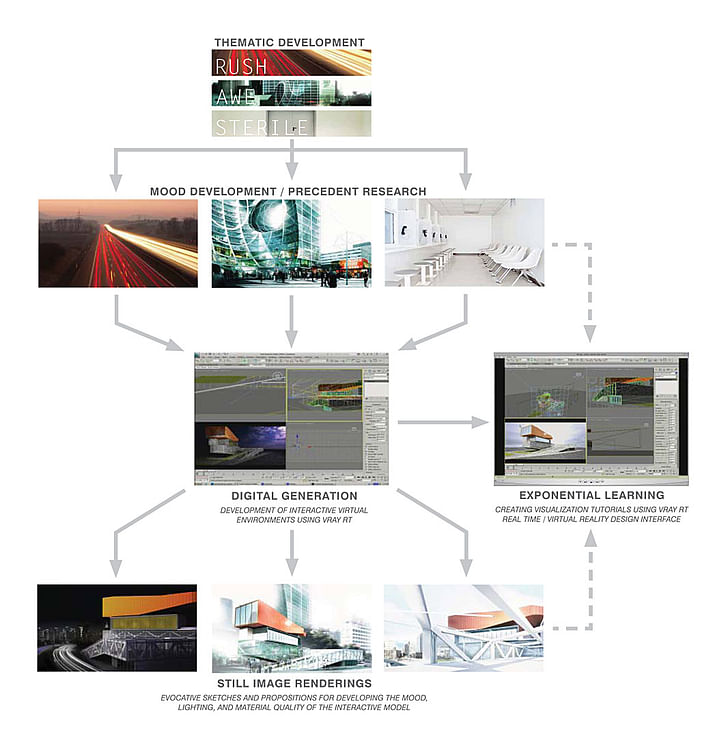
Lecture Schedule
Part 1: Thematic Development: Evoking Mood and Emotion through Rendering Style / Case Studies
Part 2: Model Optimization: Cross Platform Workflows / Organizational Strategies / Detail & Furniture Modeling
Part 3: Designing in Virtual Reality: Introduction to Vray RT / Material Application / Render Settings
Part 4: Light and Shadow: Vray & Photometric Lights / Gi & Self Illumination
Part 5: Environment and Perspective: Vray Physical Camera & Sun / HDRI Environments/ Depth of Field
Part 6: Post Production Techniques: Render Elements & Photoshop Compositing / Lighting, Mood & Color Enhancement / Cam Studio Video Recording
Fast Forward asks designers to think critically about the function of digital visualization and the potential for the software to become an interactive tool. The course encourages everyone to explore why we produce visualizations, what purpose they serve – to excite, enchant, illustrate, intrigue, ect., and the manner in which digital artists work to focus their simulations toward a specific theme or audience. The wide range of techniques available within Fast Forward permeate beyond the boundaries of this course, giving students cutting edge tools to assist in the creation of dynamic visualizations with greater speed and efficiency. Through the capabilities of this new technology, students gain a new perspective of digital design as something that is always in flux where the design process can be the presentation and vice versa.
The Final Student Projects
VILLA DALL’AVA
Columbia University GSAPP, Spring 2011
Students: Hyoung Tae Kim + Jihye Lee
Focusing around a collective investigation of the interior and exterior environments of the Villa dall’ava by the Office for Metropolitan Architecture, these students chose to use lighting and material effects to re-conceptualize this residential project and produce virtual sketches of alternate realities. The digital environment grows from the three thematic concepts of serenity, mystery and elegance. These evocative design concepts are conveyed through the creation of a dynamic virtual reality / digital model that can be easily shaped by the user through manipulation of different parameters to change the composition, materials and lighting to match that of the inspirational images of the mood board. This project utilizes the efficiency of the Vray RT rendering engine to navigate between the three emotional states within a single 3D Max model, where lighting and material effects are updated in real time. Lighting and shadow casting techniques are adjusted in real time to suggest feelings of mystery or serenity within the rendered environment, while HDRI lighting systems and background images added during post production enhance these moods within the still images. In this way an existing residential space has been synthesized with the color and atmospheric qualities of the paintings within the mood boards to produce an alternative, photorealistic design proposal. The final tutorial video illustrates how to navigate through the virtual interior and exterior environments of the Villa dall’ava and parametrically manipulate materials, textures, lighting effects and geometry to evoke the underlying moods and emotions that define additional design trajectories for this OMA project.

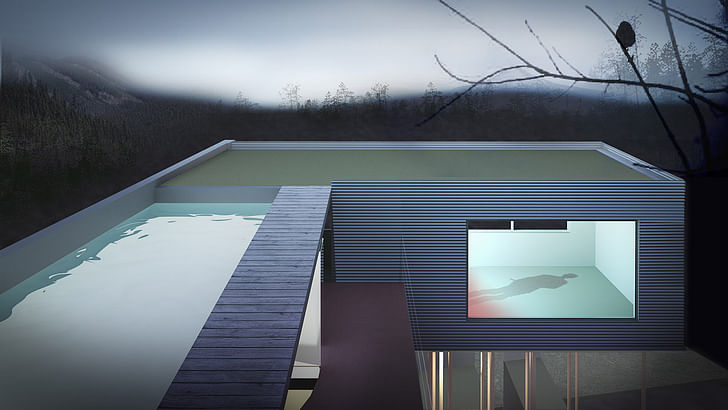
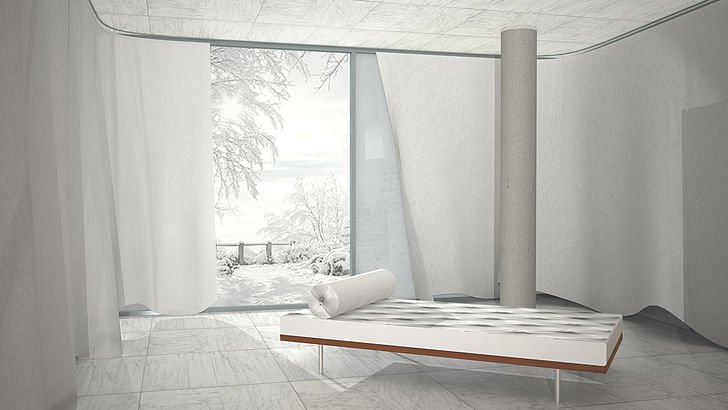
PRE-POST REFLECTION
Columbia University GSAPP, Fall 2011
Student: Evan Alejandro Bauer
This project focuses on the use of mood based visualization techniques in the marketing of architectural design. The digital environment grows from the three thematic concepts of serenity, ephemerality and intrigue which are inspired by the vivid imagery of the mood boards. These evocative moods are explored through the creation of a dynamic virtual reality / digital model that can be easily shaped by the user through manipulation of different parameters to change the composition, materials and lighting to match that of the inspirational images of the mood boards. This project also focuses on the benefits of carefully constructed camera angles and post-production compositing techniques to allow the atmospheric effects of fire and fog and the texture of the grass to appeal to senses of the viewer and shape the experience of place. Within each still image, the environment was rendered in several layers from the Vray engine using render elements, and then composited in Adobe Photoshop where direct/ambient illumination, shadow, volumetric fog, and depth of field effects can be controlled to enhance the power of the image and exceed the capabilities of the rendering engine alone. The final tutorial video illustrates how to navigate through the virtual model and the post production process employed within the still image renderings to parametrically manipulate materials, textures, lighting effects and geometry to evoke the underlying moods and emotions.

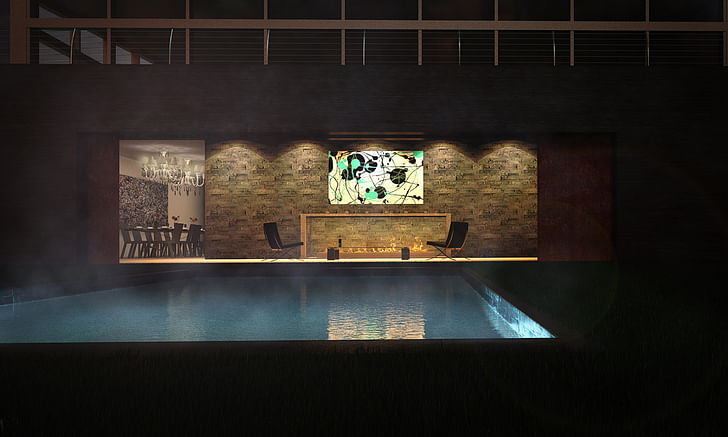
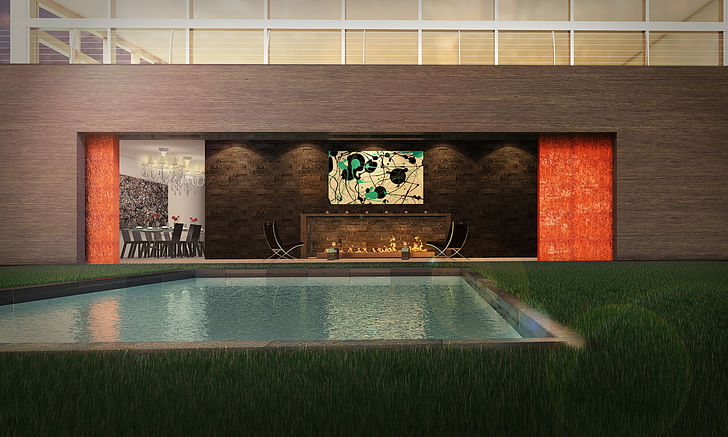
ROLEX LEARNING CENTER
Columbia University GSAPP, Fall 2011
Students: Tzu Pei Jeng and Tzu Yin Wang
This student team was interested in focusing on the tranquility, quietness and the stillness of the materiality within the specific formal moments of the Rolex Learning Center by SANAA. . The students chose to explore how the building form and materiality evokes a sense of stillness and tranquility which facilitates moments of zen, desperation and balance. Within this project balance is defined as an interaction between objects or voids that create rhythm and harmony. Zen emphasizes experiential wisdom and the attainment of enlightenment. Desperation is illustrated in terms of tension and sadness, a struggle between light and shadow, balanced by the juxtaposition of the foreground silhouette with a more detailed building articulation fading into the background. Within the Rolex Learning Center, we can see tranquility and quietness from the stillness of the materiality. The muteness of the white planes works harmoniously with the reflectiveness of the glass and lightness of the voids. Meanwhile, the subtleness of the material is accentuated by the dynamic form of the building. From a fixed perspective, the view can be framed by focusing on the void in the ceiling; this “light at the end of the tunnel” effect when viewed under certain light and the rendition of a certain blast of color can achieve either a desperate sensation or a feeling of zen. These evocative moments are explored through the creation of a dynamic virtual reality / digital model that can be easily shaped by the user through manipulation of different parameters to change the composition, materials and lighting to match that of the inspirational images of the mood board.

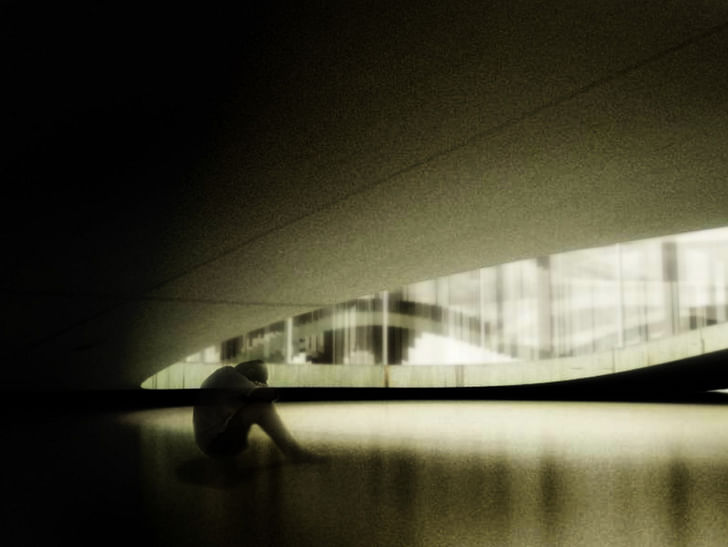
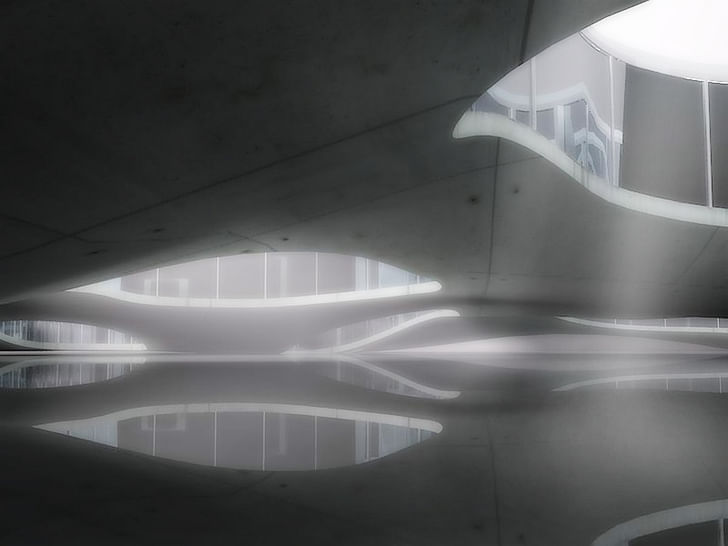
TEAM MUNDANE
Columbia University GSAPP, Fall 2010
Students: Gabriel Burkett, Dimitra Konstantinidis, Damon Lau and Luis Paris
Saudade was once described as “the love that remains” or “the love that stays” after someone is gone. It is the recollection of feelings, experiences, places or events that once brought excitement, pleasure or well-being which now triggers the senses and makes one live again. It can be described as an emptiness, like someone (e.g. one’s children, parents, sibling, grandparents, friends) or something (e.g. places, pets, things one used to do in childhood, or other activities performed in the past) that should be there in a particular moment, but is missing and the individual feels this absence. Set in a domestic scene at dawn, this project focuses on lighting, materiality and texture to suggest traces of movement, or absence. Instead of drawing on human figures, the students wished to convey a narrative through architectural elements and everyday objects. The digital environment grows from the strong emotions of saudade, serenity and eerie. These evocative design concepts are conveyed through the creation of a dynamic virtual reality / digital model that can be easily shaped by the user through manipulation of different parameters to change the composition, materials and lighting to match that of the inspirational images of the mood boards. This project utilizes the efficiency of the Vray RT rendering engine to navigate between the three emotional states within a single 3D Max model, where lighting and material effects are updated in real time. The final tutorial video illustrates how to navigate through the interior environment and recreate the feelings of saudade, serenity and eeriness.
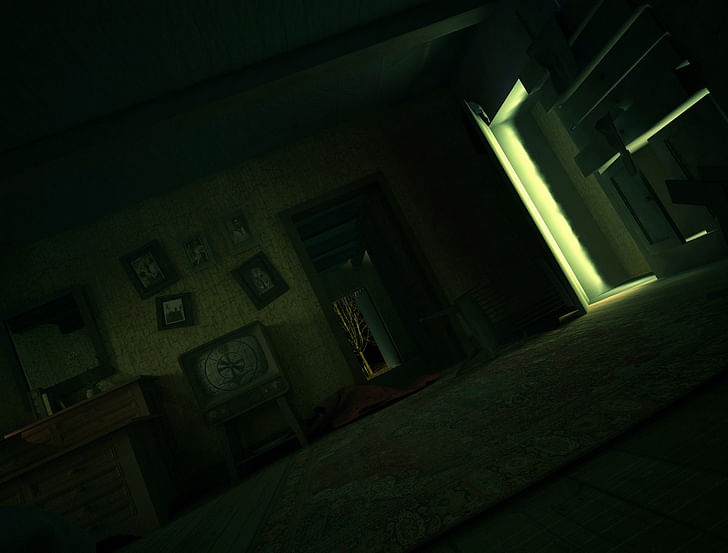
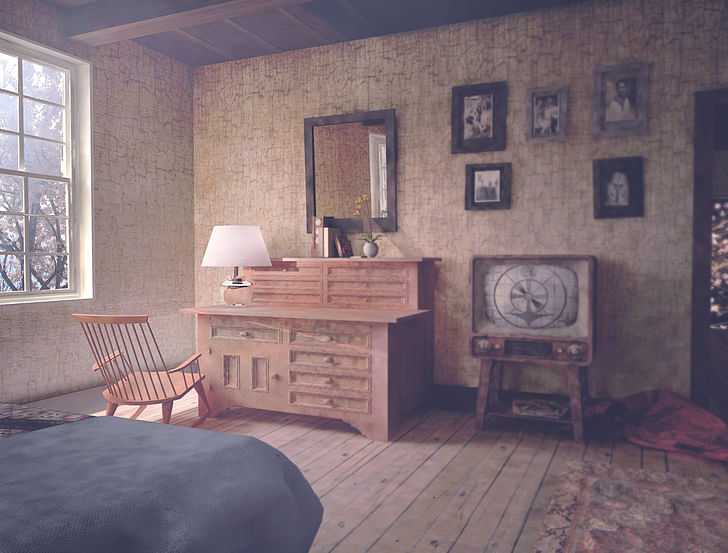
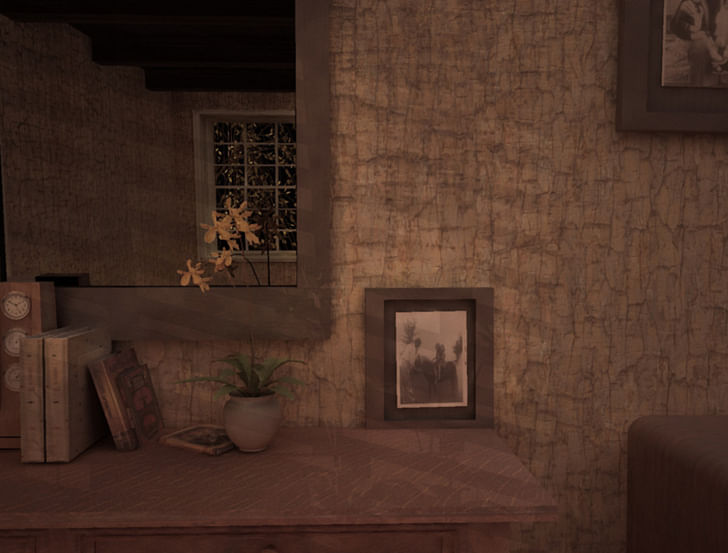
SHANGHAI EXPO PAVILION
Columbia University GSAPP, Fall 2010
Student: Travis Bunt
The intent of this exploration is to study the effects of illumination and reflection on mood and perception of a plaza at the Shanghai Expo. The digital environment grows from the three thematic concepts of wonder, curiosity and intrigue. These evocative design concepts are conveyed through the creation of a dynamic virtual reality / digital model that can be easily shaped by the user through manipulation of different parameters to change the composition, materials and lighting to match that of the inspirational images of the mood board. This project utilizes the efficiency of the Vray RT rendering engine to create a digital construct where daylight is controlled through animation and the virtual reality window can be used to study the effects of natural and artificial lighting within an environment that can be updated in real time. The digital model combined with the real time rendering engine are configured to explore the representation of an object’s movement through reflection. The intent is to create an illuminated object in a reflective field and experiment with the lighting of the area (color, angle, intensity), the illumination of the object (color, pattern, projected image), and the quality/clarity of the reflection through minor and major distortions in these images. There is a fascinating tension between the programmed macro manipulations (as the illuminated monument of the Shanghai Expo cycles through colors and projection) and the uncontrolled, sporadic micro manipulations caused by silhouetted persons transitioning through the space as their movements create varied levels of distortion within the reflected image in the pool below. The final tutorial video illustrates how to navigate through the virtual interior and exterior environments and parametrically manipulate materials, textures, lighting effects and geometry to evoke the underlying moods and emotions that define additional design trajectories for the plaza.
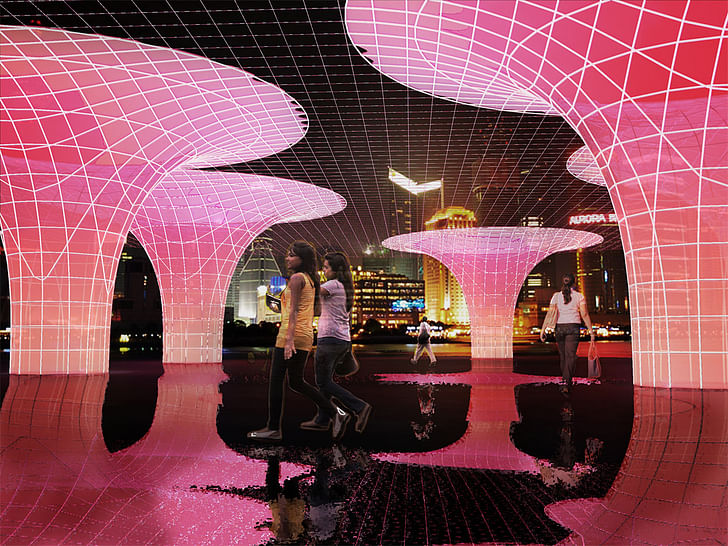

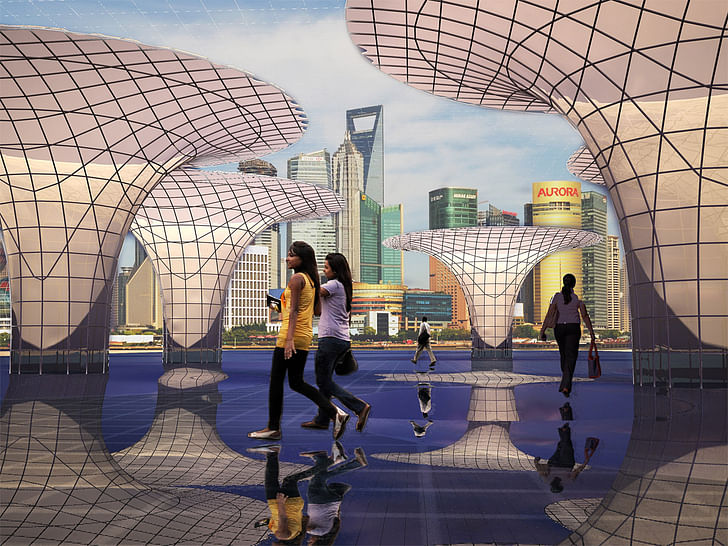
BARCELONA PAVILION
Columbia University GSAPP, Spring 2011
Student: Alok Shetty
Focusing around an investigation of the interior and exterior environments of the Barcelona Pavilion by Mies van der Rohe, this student chose to use lighting and material effects to re-conceptualize the iconography of this project and produce virtual sketches of transformative material choices. The digital environment grows from the three thematic concepts of sublimity, minimalism and tangibility. These evocative design concepts are conveyed through the creation of a dynamic virtual reality / digital model that can be easily shaped by the user through manipulation of different parameters to change the composition, materials and lighting to match that of the inspirational images of the mood board. This project utilizes the efficiency of the Vray RT rendering engine to navigate between the three emotional states within a single 3D Max model, where lighting and material effects are updated in real time. Lighting and shadow casting techniques are adjusted to enhance the tangible quality of the interior statue through the creation of illuminated focal points. Sublimity is suggested through the insertion of a tree within the reflecting pool which seems out of place, while the concepts of minimalism are studied through the adjustment of materials on the perimeter benches in the external courtyard coupled with the establishment of a strong perspective which favors the strong minimal lines of this modernist icon. The final tutorial video illustrates how to navigate through the virtual interior and exterior environments and parametrically manipulate materials, textures, lighting effects and geometry to evoke the underlying moods and emotions that define additional design trajectories for the Barcelona Pavilion.



RUSH AWE STERILE
Columbia University GSAPP, Spring 2011
Student: Jamie Abrego
This project focuses on the use of mood based visualization techniques in the marketing of architectural design. The various spaces within this mixed use, urban building contain several disparate emotional characteristics that work to shape the inhabitants’ experience of place. The digital environment grows from the three thematic concepts of rush, awe and sterility which are inspired by the rendered images and vivid photographs of the mood boards. These evocative moods are explored through the creation of a dynamic virtual reality / digital model that can be easily shaped by the user through manipulation of different parameters to change the composition, materials and lighting to match that of the inspirational images of the mood board. This project utilizes the efficiency of the Vray RT rendering engine to navigate between the three emotional states within a single 3D Max model, where lighting and material effects are updated in real time. The feeling of sterility is achieved through the use of white objects, establishing depth through lighting effects. The rendering is over exposed in post production causing burns on some edges which are varied through the cool spectrum of color. Awe is achieved through the selection of a small number of materials to portray the concept, combined with overexposure and depth of field to give the primary object a sense of power or monumentality. Finally, feelings of rush are evoked within the night rendering through the suggestion of rapid movement: streaking lines of light illustrating the close proximity of speeding traffic to the building. The final tutorial video illustrates how to navigate through the virtual model and the post production process employed within the still image renderings to parametrically manipulate materials, textures, lighting effects and geometry to evoke the underlying moods and emotions.
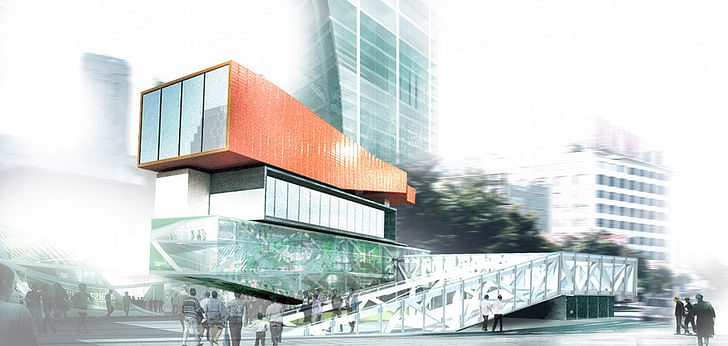
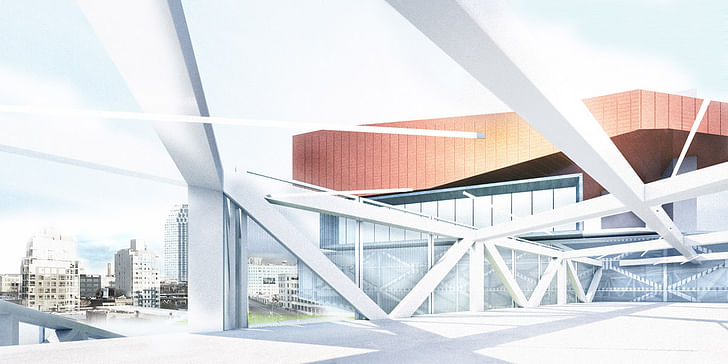
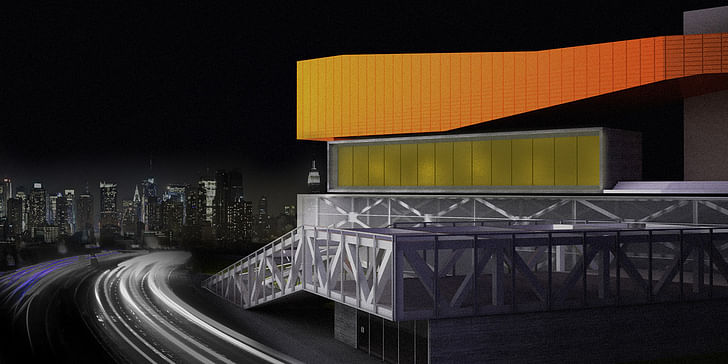
THERME VALS
Columbia University GSAPP, Fall 2010
Students: Jun Do, El Young Moon and Won Woo Park
This student team was interested in simulating a built environment which contains several disparate emotional characteristics that work to shape the inhabitants’ experience of place. The digital environment grows from the three thematic concepts of curiosity, awe and relaxation which are inspired by the images of the mood boards (Peter Zumthor’s Therme Vals, Le Corbusier’s Ronchamp and the Church of Light by Tadao Ando). These selected architectural masterpieces are experienced with a series of these emotional and sensational spatial qualities and these qualities are often created both by artificial and natural elements such as natural lighting, interior illumination, water features and material variations. The students chose to explore the defining moments of the Therme Vals through mood based visualization techiniques, because this project makes use of all the aforementioned elements to provide a dark and almost sacred space yet one that is soothing and relaxing at the same time. These evocative moments are explored through the creation of a dynamic virtual reality / digital model that can be easily shaped by the user through manipulation of different parameters to change the composition, materials and lighting to match that of the inspirational images of the mood board. This project utilizes the efficiency of the Vray RT rendering engine to navigate between the three emotional states within a single 3D Max model, where lighting and material effects are updated in real time. The final tutorial video illustrates how to navigate through the virtual interior and exterior environments and parametrically manipulate materials, textures, lighting effects and geometry to evoke the underlying moods and emotions that define Peter Zumthor’s vision for the Therme Vals.



SERENE CHAOS
Columbia University GSAPP, Fall 2010
Student: Heghine Grigoryan
Focusing on evocative propositions of future cityscapes, this student chose to utilize the capabilities of real time digital visualization as a vehicle to present different perspectives of her imaginative visions of urban space at different scales. The digital environment grows from the three thematic concepts of serenity, leading the eye and chaos. These design concepts are conveyed through the creation of a dynamic virtual reality / digital model that can be easily shaped by the user through manipulation of different parameters to change the composition, materials and lighting to match that of the inspirational images of the mood board. This project utilizes the efficiency of the Vray RT rendering engine to navigate between the three emotional states within a single 3D Max model, where lighting and material effects are updated in real time. The mood boards draw from rich urban and serene perspectives, viewing the city from inside out and vice versa. The mood of serenity is expressed in a calming scene set within an urban perch; an apartment drenched in natural light that highlights the rich textures in the foreground while producing a subdued vision of the city beyond and a feeling of calming absence of objects on the interior by focusing on the play of light around a single tennis racket. Leading the eye grows from a scene set within an abandoned industrial plant where graffiti laden interior walls lead the viewers eye on a specific path through a network of lines and linear textures that adorn the walls, floor and ceiling. The chaotic mood is defined through the deconstruction of the industrial plant and repositioning the materials throughout the space in a manner which evokes feelings of fantasy. The final tutorial video illustrates how to navigate through the virtual model and the post production process employed within the still image renderings to parametrically manipulate materials, textures, lighting effects and geometry to evoke the underlying moods and emotions.

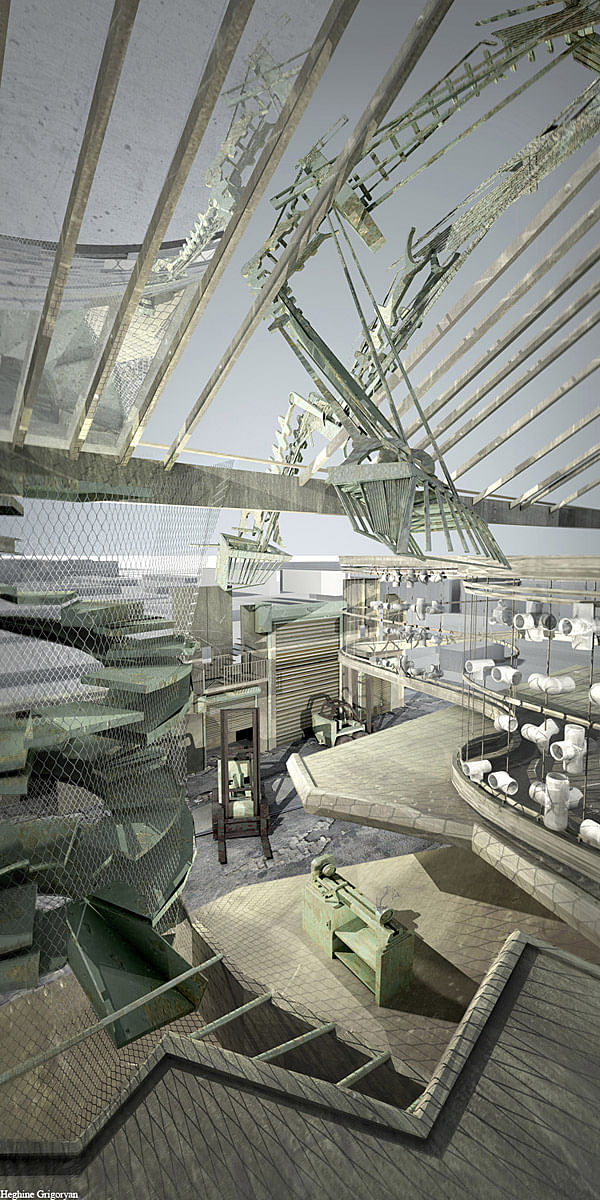
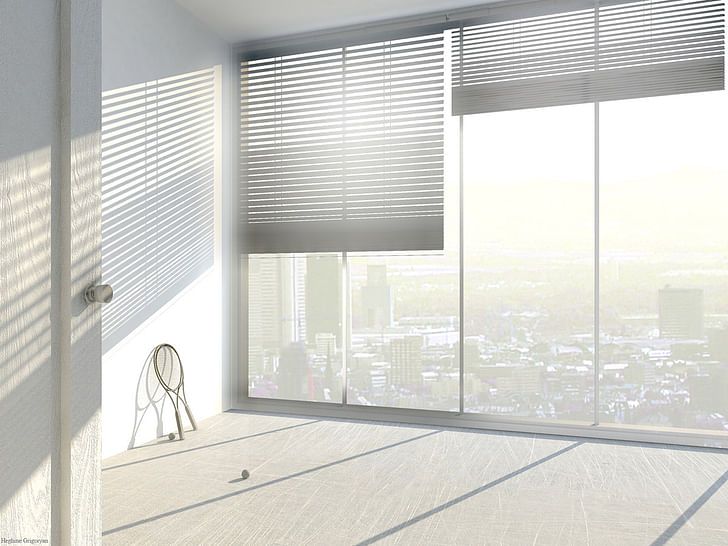
Jason Ivaliotis is a Senior Associate for the New York office of Handel Architects and is currently working on the design for two buildings in the Essex Crossing Development on the Lower East Side of Manhattan. He began his professional journey as a designer and educator at Miami University in ...
No Comments
Block this user
Are you sure you want to block this user and hide all related comments throughout the site?
Archinect
This is your first comment on Archinect. Your comment will be visible once approved.